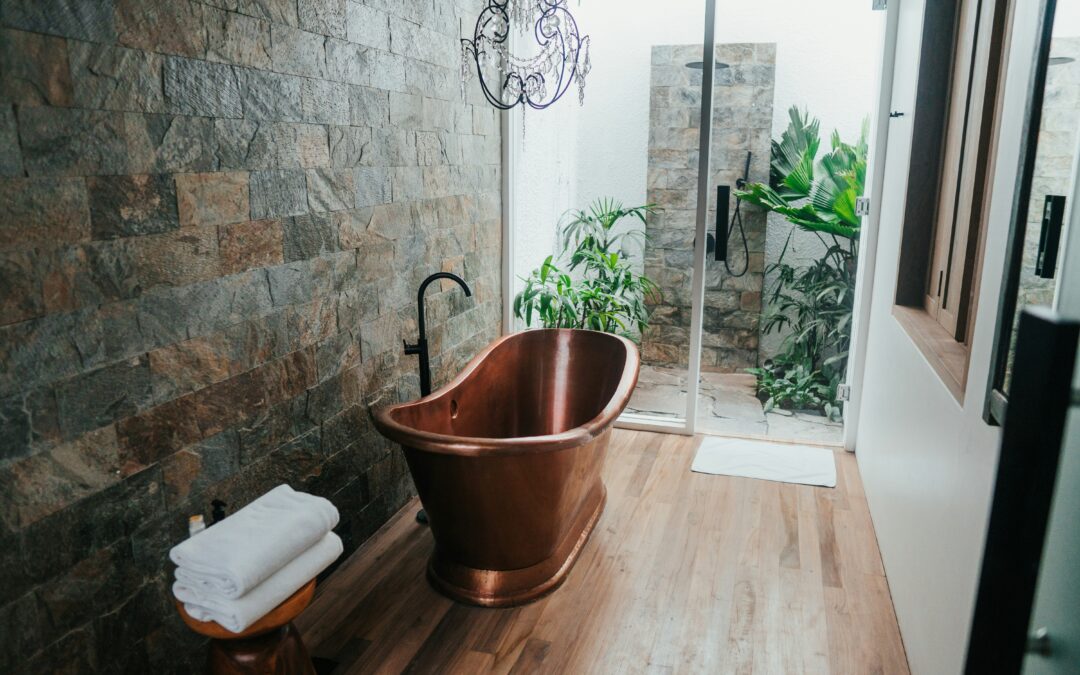Embracing Sustainability in Your Bathroom Renovation
Renovating your bathroom with eco-friendly practices is not only beneficial for the environment but also for your home’s overall health and efficiency. Whether you are planning a full bathroom installation London or just a few updates, incorporating sustainable elements can make a significant difference. Here are some practical and positive tips to help you create a more eco-friendly bathroom.
Choosing Sustainable Materials
Eco-Friendly Flooring and Tiles
When selecting flooring and tiles, consider materials like reclaimed wood, bamboo, or cork. These materials are sustainable because they are renewable and have a lower environmental impact. Reclaimed wood, for example, repurposes old materials, reducing the need for new resources and minimizing waste. Bamboo grows quickly and regenerates without the need for replanting, making it a highly sustainable option. Cork is harvested from the bark of cork oak trees, which continue to grow and regenerate after the bark is removed.
Recycled and Natural Countertops
Opt for countertops made from recycled glass, reclaimed wood, or natural stone. Recycled glass countertops are made from post-consumer materials and come in a variety of colors and patterns. Reclaimed wood countertops give a rustic and unique look while promoting the reuse of materials. Natural stone, such as granite or marble, is durable and long-lasting, reducing the need for replacements over time.
Water Conservation Techniques
Installing Low-Flow Fixtures
One of the most effective ways to reduce water usage in your bathroom is by installing low-flow fixtures. Low-flow toilets, faucets, and showerheads can significantly decrease the amount of water used without sacrificing performance. For instance, low-flow toilets use as little as 1.28 gallons per flush compared to the standard 1.6 gallons, saving thousands of gallons of water each year.
Water-Efficient Showerheads
Water-efficient showerheads, such as those with aerating features or laminar flow, mix air with water to maintain pressure while using less water. This not only conserves water but also reduces energy costs associated with heating water. Look for showerheads with the WaterSense label, which indicates they meet the EPA’s criteria for water efficiency.
Enhancing Energy Efficiency
Energy-Saving Lighting
Switching to LED lighting is a simple yet impactful way to enhance energy efficiency in your bathroom. LEDs use up to 80% less energy than traditional incandescent bulbs and last much longer. They are available in a variety of styles and color temperatures to suit any design preference.
Solar Water Heaters
Consider installing a solar water heater to reduce your reliance on conventional energy sources. Solar water heaters use the sun’s energy to heat water, which can significantly cut down on electricity or gas usage. This not only lowers your utility bills but also reduces your carbon footprint.
Green Cleaning and Maintenance
Natural Cleaning Products
Maintaining your eco-friendly bathroom involves using natural and non-toxic cleaning products. Many conventional cleaners contain harsh chemicals that can harm the environment and your health. Instead, opt for products made with natural ingredients like vinegar, baking soda, and essential oils. These alternatives are effective at cleaning and disinfecting without the negative environmental impact.
Regular Maintenance for Longevity
Keeping your bathroom in good condition through regular maintenance can extend the life of your fixtures and materials. Regularly check for leaks and fix them promptly to prevent water waste and damage. Ensure that ventilation systems are working properly to reduce moisture buildup and mold growth, which can compromise indoor air quality and the integrity of your bathroom materials.
Creating a Healthier Environment
Indoor Plants for Air Quality
Incorporating indoor plants in your bathroom can improve air quality and add a touch of nature. Plants like aloe vera, spider plants, and peace lilies are known for their air-purifying abilities. They can help remove toxins from the air and increase humidity, creating a healthier indoor environment.
Non-Toxic Paints and Finishes
When painting or finishing surfaces in your bathroom, choose non-toxic, low-VOC (volatile organic compounds) paints and finishes. These products emit fewer harmful chemicals, improving indoor air quality and reducing health risks. They are available in a wide range of colors and finishes, allowing you to create a beautiful and safe bathroom space.
Conclusion
Renovating your bathroom with eco-friendly practices is a positive step towards a more sustainable and healthy home. By choosing sustainable materials, conserving water, enhancing energy efficiency, and using green cleaning products, you can create a bathroom that is not only beautiful but also environmentally responsible. Start implementing these tips today to make a lasting impact on your home and the planet.


